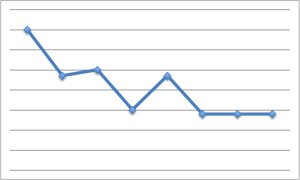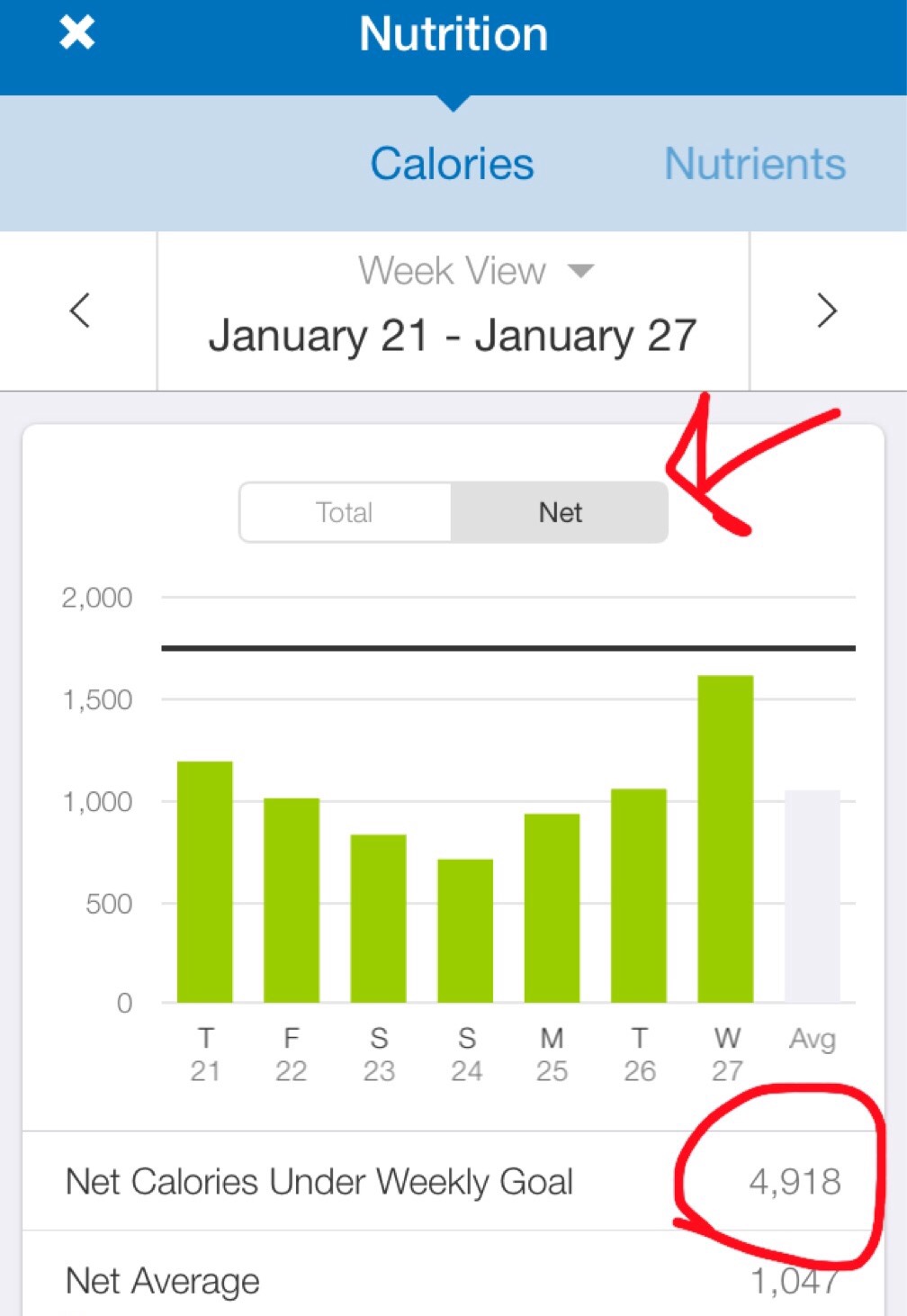If you are honestly and thoroughly tracking your exercise and food in MyFitnessPal and you have your goal intake correctly set to reflect your BMR and activity level (NOT the default value that the app fills in), this one number can honestly tell you whether or not you are likely to lose weight:
“Net Calories Under Weekly Goal”
This number is:
the total number of calories you consumed during the week, minus
the calories you expend living every day of the week (breathing, sleeping, blinking, thinking, picking up around the house, walking to and from the car in the parking lot…) AND the calories you burned through intentional exercise.
If that number is between 2000 and 5000, you can reasonably expect to be losing weight (and it will probably be bodyfat, too, rather than muscle).
If that number is negative, you are probably gaining weight.
If that number is very small or very large, you are probably either staying the same or slowly gaining weight.
Why?
There are, for all intents and purposes, 3500 calories in a pound. (This is not a perfect science, nor is food and exercise tracking, so don’t get numerically obsessed.) If, between a combination of eating sufficiently and exercising enough, you come in under 3500 calories for the week, you are in range to see the scale shuffle slowly downward at some point in the near future.
When??
That depends on lots of things, like your stress levels, hydration, sleep, and alcohol consumption. Hormones also come into play.

That is a graph of actual scale readings over 18 days while carefully tracking food and exercise through MyFitnessPal to make sure that the “net calories under weekly goal” stayed in a range that was right for this client. She lost 4.2 pounds over this interval.
So, what’s up with the flat part of the graph for almost a week at the end? Did she give up and eat cupcakes? It’s actually probably a loss – but her hormonal cycle started over, so she was dealing with water retention and all of the other necessary physical processes for a few days. She tends to retain 2-3 pounds of water for a week or so every month, so the fact that the line stayed flat rather than rising suggests that her actual loss over this 18 day interval was closer to 5-6 pounds. (Remember, your body isn’t just a weight loss/fat storage machine!)
Also, notice that the chart isn’t just a line that goes down and to the right…your body is always doing other things (repairing muscles, digesting food…) that cause the scale to rise and fall. But, if you stay the course (and have the data to help yourself see that you’re staying the course), you will see progress.
Can I just lower my calorie intake to reach that 3500 calorie deficit?
The long-term answer is no. You have to include exercise. This kind of thinking is where the “magic 1200” calorie number comes from, but it’s not correct.
A better plan is to eat within the range I’ve recommended to you (spoiler: it already includes a 200-300 calorie daily deficit, or a 1400-2100 calorie weekly deficit, depending on your needs and activity level) (if you’re not my client, you can always contact me if you need help figuring out a healthy level of food intake) and work out at least 3 times a week, even if you are just taking a walk in your neighborhood.
(It’s a short answer, but I will be posting more very soon about that “magic 1200” number, so just trust for now that your body needs you to move it!)
If you only track some of your food and exercise, this number is worthless.
This number doesn’t work day-by-day, and it doesn’t work without complete information.
If you do track accurately, this number is pretty helpful.
Track even when you know you totally eclipsed your goal for the day.
Track even when you know you totally didn’t eat enough for the day.
Just put the data in there so that you can have a true weekly picture of how you’re doing. Objective data is way more helpful than feelings sometimes!

